Maintaining your bathroom is key. Cleaning the drain pipes is essential to proper water drainage, getting rid of bad odours, and avoiding clogs. Here’s how to clean them right.
- Gather the tools: gloves, a plunger, an eco-friendly drain cleaner solution, and a pipe brush.
- First, get rid of any debris or hair from the drain surface. This helps prevent more blockages and makes it easier to reach the pipe.
- Pour the solution into the drain. Follow the instructions on the product packaging for the best results. This will dissolve grime and organic matter.
- Use a plunger to create suction and dislodge any remaining debris or build-up. Plunge vigorously while making sure there’s a good seal between the plunger and the drain opening.
- For hard-to-reach areas, use a pipe brush. Insert it gently and rotate slowly, to clean without causing damage.
- To maintain clean pipes, use strainers or hair catchers over the drains. This will keep hair and other particles away. Flush hot water down the drains regularly too.
Follow these steps from Rider Drains a professional drainage company based in Durham and take preventive measures for a smoothly running bathroom. Cleaning and maintenance will save you from clogs, bad smells, and plumbing emergencies. Take action now and enjoy a healthy bathroom.
Understanding The Importance Of Clean Drain Pipes In Your Bathroom
Drain pipes in the bathroom must be kept clean. Clogged drains can lead to bad smells, water leakage, and even damage to the structure. Regular cleaning prevents these issues and keeps it hygienic.
Hair, soap scum, and other debris can clog the drain. This blocks the water flow and creates a place for bacteria and mould to breed. It can also make water back up into the sink or shower, and damage the area.
To clean the drain pipes, hot water and vinegar can be used. Pour it down the drain to break down grease and soap. A plunger or plumbing snake can remove debris stuck deeper.
Baking soda and lemon juice work too. The effervescence helps dissolve blockages and leaves a pleasant scent. If all else fails, use commercial drain cleaners.
Once, I had an extreme clog in the shower drain and it caused the water to overflow. All my DIY attempts failed. I then called a plumber who cleared the blockage using special tools and gave me preventive tips.
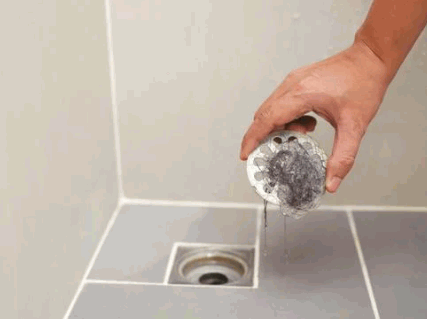
Gathering The Necessary Tools And Materials
You’ll need gloves to shield your hands from dirt and bacteria in the pipes. Plus, a small brush or toothbrush can help shift grime stuck in tricky spots.
Have a plunger close by. This tool can generate suction and unblock drains. Cover the overflow opening with a wet cloth while plunging for best results.
A drain snake or plumber’s auger can tackle stubborn clogs. These flexible tools can slither through pipes and shatter obstructions. Water will flow freely again.
Gather baking soda and vinegar. This duo can work miracles when blended. Pour baking soda down the drain then vinegar. This creates a chemical reaction that breaks down organic matter.
Wear gloves when handling chemicals. Follow safety protocols and call in experts when needed. Gather these items and you’ll be ready to clean bathroom drain pipes.
Preparing The Bathroom For Drain Cleaning
Clear the Area:
- Get rid of things from the sink, countertops, and shower area.
- Take away any mats or rugs.
Gather the Necessary Tools:
- Collect tools like a drain snake or plunger, gloves, bucket, and cleaning solution.
- Having these tools prepared will help keep things on track.
Protect Yourself:
- Put on protective gloves. This keeps your hands away from debris or dangerous substances.
Ventilation Check:
- Increase airflow in the bathroom. Open windows or turn on fans.
This will stop bad odours from occurring while drain cleaning.
Before tackling drains, make sure you do all of the above! This makes it safe and faster. Now, no drain is too tough to handle!
Removing The Drain Cover
Locate the bathroom drain cover; usually near the shower or bathtub. Note its shape and size – this will determine what tool is needed for removal. Use a screwdriver or pliers to remove any screws or clips securing it. Gently lift the cover upwards; apply pressure if needed.
Be cautious of any dirt or debris that may have accumulated. Clean away any visible residue with a brush or gloved hand. Inspect the cover and opening for damage or blockage. Use a wire hanger or narrow brush to clear out any obstructions.
We must always handle drains with care as they can be sharp or fragile. Clean your drains regularly to ensure proper hygiene and prevent odours.
The last time I cleaned my bathroom drain, I found something unexpected! A miniature rubber duck trapped in matted hair and grime! This funny incident taught me to clean drains regularly and with diligence – who knows what interesting discoveries await beneath that drain cover! Let’s move on to unclogging those pipes!
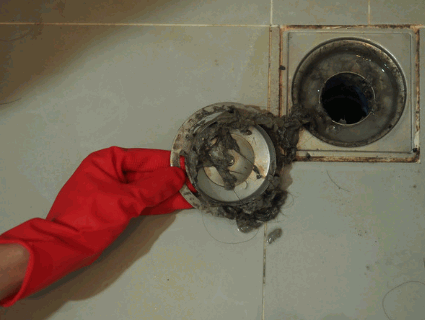
Clearing Any Visible Debris
For optimal bathroom drain pipe performance, start by clearing away any visible blockage-causing debris. Here’s a 6-step guide on how to do it:
| 1. Use a screwdriver or pliers to take off the drain cover. |
| 2. Check for hair, soap scum, and other mess. |
| 3. Pull out any debris with tweezers or needle-nose pliers. |
| 4. If the clog won’t budge, use a plumbing snake or auger. |
| 5. Flush with hot water to clear residues. |
| 6. Securely replace the cover and test drainage by running water. |
Regular maintenance is essential to keep future build-up away. Install a drain strainer or filter for bigger particles.
Pro Tip: Avoid chemical drain cleaners; use natural alternatives such as baking soda and vinegar to break down and clear smaller clogs.
By following these steps and doing regular maintenance, you can help ensure your bathroom drains well and prevent expensive plumbing issues.
Using Chemical Drain Cleaners Or Natural Alternatives
Chemical drain cleaners are a popular choice for unclogging pipes. They can dissolve hair, grease, and other blockages quickly.
Alternatively, natural ingredients such as baking soda and vinegar are eco-friendly options.
Both can help prevent future blockages if used on a regular basis.
It’s worth noting that chemical drain cleaners may contain harsh ingredients, so extra care is necessary. Natural alternatives may take more time but are safer.
The history of chemical drain cleaners dates back to the early 20th century. Scientists discovered alkaline substances would dissolve obstructions. This discovery changed sanitation practices worldwide.
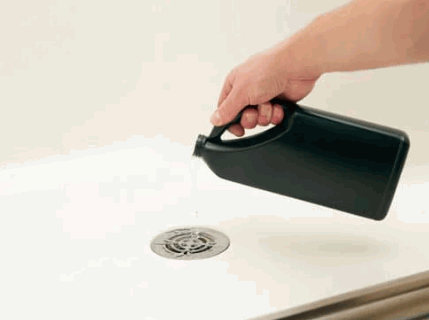
Using A Plunger To Unclog The Drain
- Position the plunger: Put it in a way that the rubber cup is tightly attached to the sink or bathtub.
- Create suction: Push and pull the plunger forcefully, and keep repeating this action multiple times.
- Check for drainage: See if the water is flowing freely. If it does, you have successfully unclogged the drain!
- Remember: Not all clogs can be unblocked using a plunger. It works best for minor issues caused by hair or debris.
- Pro Tip: If the problem persists, use a chemical cleaner or call a plumber for help.

Using A Drain Snake Or Auger For Deeper Clogs
When you have a tough clog in your bathroom pipes, using a drain snake or auger can help. These tools are meant to get deep into the pipes and break up blockages. Here’s a guide on how to use them:
- Put one end of the tool into the clogged pipe.
- Push it further in.
- When you feel resistance, rotate the handle clockwise to break it up.
- Keep pushing and rotating until there’s no more resistance, and the clog is gone.
- Take out the tool carefully, so you don’t damage it.
- Run hot water down the drain to flush away any remaining debris.
For best results, use a snake or auger that matches the size of your pipes. Putting lubricant on before inserting it can help it slide through more easily. To prevent future build-up, clean drains regularly with baking soda and vinegar. Use a mesh cover to catch hair and other debris. Don’t pour grease or oil down the drain, as it can solidify and cause blockages. By following these tips and using a drain snake or auger when needed, you can keep your bathroom pipes clear and working properly.
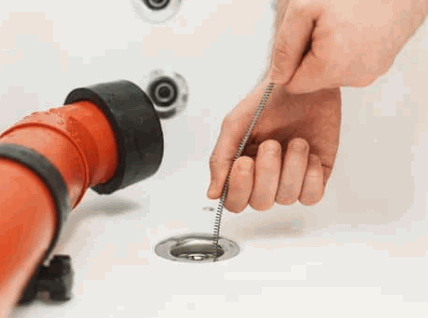
Flushing The Drain With Hot Water
Flushing your bathroom drain with hot water is an effective way to keep it clean and unclogged. Here is a 5-step guide on how to do it:
- Boil a kettle full of hot water.
- Carefully pour it down the drain, trying to cover as much of the pipe as possible.
- Let the hot water sit for a few minutes.
- Turn on the cold water for about a minute.
- Repeat this process every few weeks.
Also, consider these tips:
- Use a kettle specifically for cleaning.
- Wear protective gloves.
- Flush regularly to prevent foul odours.
Follow these steps and suggestions to ensure your bathroom drain pipes are functioning optimally and are hygienic.
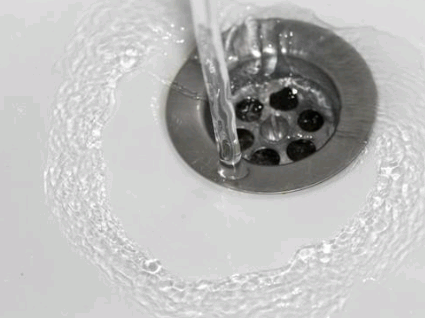
Replacing The Drain Cover
Remove the old drain cover using a screwdriver and unscrew the screws.
Clean the area around the drain with a mild cleaning solution and brush.
Place the new drain cover and secure it with screws. Make sure the fit is snug to avoid water leakage.
Choose a high-quality drain cover for improved longevity. Stainless steel or plastic is rust and corrosion-resistant.
Changing the drain cover regularly prevents plumbing issues. Do it now and enjoy a functional bathroom!
Preventive Measures To Keep Your Drain Pipes Clean
Preventing clogged drains is easy with these simple steps!
Regularly remove hair and debris from the drain cover. Install a drain strainer to trap bigger particles. Refrain from pouring grease or oil down the drain. Once a week, flush with hot water. Mix baking soda and vinegar and pour down the drain.
Get professional maintenance for regular inspections. And don’t forget to use natural cleaning solutions like lemon juice mixed with salt.
In the past, people had to manually clean drains with special tools. But nowadays, we have modern plumbing systems to make preventive measures more accessible. Implement these tips and your drain pipes will flow smoothly!
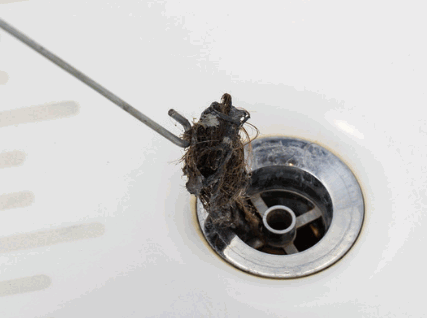
Conclusion
Maintaining your drain pipes is an important job. Follow the steps here and you’ll keep clogs away.
- Clean out any debris to make sure water flows well.
- Natural cleaners like baking soda and vinegar can help break down grime and take away bad smells.
- Avoid harsh chemical cleaners – they can hurt pipes.
- If your drain has serious blockages, call a plumber.
- To prevent future clogs, put a hair catcher in your shower drain and clean it out. That’s a smart way to stop hair clogs.
Frequently Asked Questions
1. How often should I clean my bathroom drain pipes?
It is recommended to clean your bathroom drain pipes at least once every few months to prevent clogs and maintain proper drainage.
2. What tools do I need to clean drain pipes in my bathroom?
You will need a plunger, drain snake or auger, a bucket, vinegar, baking soda, and hot water.
3. Can I use chemical drain cleaners?
Yes, you can use chemical drain cleaners, but they may damage the pipes over time. It’s best to try natural methods first.
4. How can I prevent clogs in my bathroom drain pipes?
Avoid pouring grease or oil down the drain, use a hair strainer to catch hair and debris, and regularly clean the drains with vinegar and baking soda.
5. My bathroom drain pipes are still clogged after cleaning. What should I do?
If the clog persists, you may need to use a drain snake or call a professional plumber to remove the blockage.
6. Are there any maintenance tips for keeping bathroom drain pipes clean?
To maintain clean drain pipes, pour boiling water down the drains once a week and avoid letting hair and debris accumulate in the pipes.
